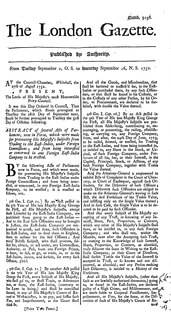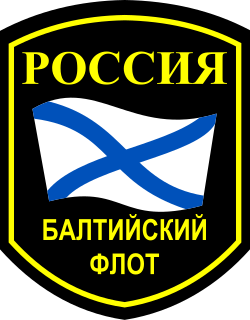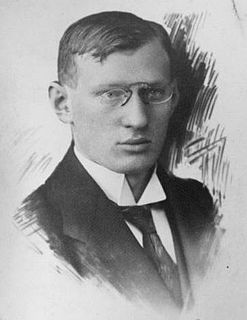
Gyula "Julius" Breyer was a Hungarian chess player and 1912 Hungarian national champion.

AMO ZiL, known fully as the Public Joint-Stock Company – Likhachov Plant and more commonly called ZiL, was a major Russian automobile, truck, military vehicle, and heavy equipment manufacturer that was based in Moscow, Russia.

The Malyshev Factory, formerly the Kharkiv Locomotive Factory (KhPZ), is a state-owned manufacturer of heavy equipment in Kharkiv, Ukraine. It was named after the Soviet politician Vyacheslav Malyshev. The factory is part of the State Concern UkrOboronProm.

The JSC Admiralty Shipyard is one of the oldest and largest shipyards in Russia, located in Saint Petersburg. The shipyard's building ways can accommodate ships of up to 70,000 tonnes deadweight (DWT), 250 metres (820 ft) in length and 35 metres (115 ft) in width. Military products include naval warships such as nuclear and diesel-powered submarines and large auxiliaries.

The Silvertown explosion occurred in Silvertown in West Ham, Essex on Friday, 19 January 1917 at 6.52 pm. The blast occurred at a munitions factory that was manufacturing explosives for Britain's First World War military effort. Approximately 50 long tons of trinitrotoluene (TNT) exploded, killing 73 people and injuring 400 more, as well as causing substantial damage in the local area. This was not the first, last, largest, or the most deadly explosion at a munitions facility in Britain during the war: an explosion at Faversham involving 200 long tons of TNT killed 105 in 1916, and the National Shell Filling Factory, Chilwell, exploded in 1918, killing 137.

The Kirov Plant, Kirov Factory or Leningrad Kirov Plant (LKZ) is a major Russian machine-building manufacturing plant in St. Petersburg, Russia. It was established in 1789, then moved to its present site in 1801 as a foundry for cannonballs. The Kirov Plant is sometimes confused with another Leningrad heavy weapons manufactory, Factory No. 185 .

The Black Sea Shipyard is located in Mykolaiv, Ukraine. It was founded in 1895 by Belgian interests and began building warships in 1901. At the beginning of World War I in 1914, it was one of the largest industrial facilities in the Russian Empire. The shipyard was moribund until the Soviets began building up the fleet in the 1930s and it began building surface warships as well as submarines. The yard was badly damaged during World War II and took several years to be rebuilt. Surface warship construction temporarily ended in the mid-1950s before being revived in the mid-1960s and submarines were last built in the yard in late 1950s. The Black Sea Shipyard built all of the aircraft carrying ships of the USSR and Russia and continues to build large commercial ships.
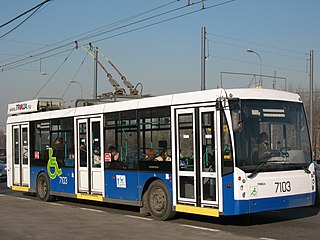
Trolza, formerly known as the Uritsky factory or simply Uritsky, is a trolleybus manufacturer in Russia, located in Engels, Saratov oblast. In the Soviet era it was known as ZiU or Uritsky factory.

CJSC Transmashholding is the largest manufacturer of locomotives and rail equipment in Russia and after merging with LocoTech service the fourth largest engineering company in the field of transport technology globally.

Mykolayiv Shipyard is a major shipyard owned by state and located in Mykolaiv, Ukraine. In modern times, the shipyard has been most commonly referred to as Mykolayiv North Shipyard. Until 2017 it was known as the Shipyard named after 61 Baku Communards.

The Zaliv Shipbuilding yard is located in Kerch, Crimea and specializes in the construction of tankers and container carriers, and the repair of ships of different types and tonnage.
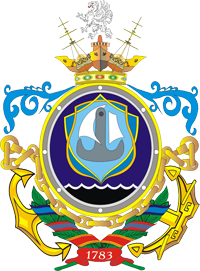
Sevastopol Shipyard is a shipyard located in Sevastopol, Crimea, founded as a dockyard for the Imperial Russian Navy in 1783.

Komintern was a Soviet light cruiser originally named Pamiat' Merkuria, a Bogatyr-class protected cruiser built for the Imperial Russian Navy. She saw service during World War I in the Black Sea and survived the Russian Civil War, although heavily damaged. She was repaired by the Soviet Navy and put into service as a training cruiser. In 1941 she was reclassified as a minelayer and provided gunfire support and transported troops during the Siege of Odessa, Siege of Sevastopol, and the Kerch-Feodosiya Operation in the winter of 1941—42. She was damaged beyond repair at Poti by a German air attack on 16 July 1942. Afterwards she was disarmed and hulked. At some point she was towed to the mouth of the Khobi river and sunk there as a breakwater on 10 October 1942.

OJSC Amur Shipbuilding Plant is an important shipyard in eastern Russia, based in Komsomolsk-on-Amur, and founded in 1932. It employs 15,000 people, and produces both civilian and military ships, including nuclear submarines.

The Middle Neva Shipbuilding Plant was founded before the end of the 19th century in Saint Petersburg, Russia. In 1917 it employed 17,000 people. It established a branch in Nikolaev in the early years of the 20th century to assemble ships which had been built in St. Petersburg and transported to the Black Sea. It is part of the United Shipbuilding Corporation.
The Okhta shipyard was a Russian shipyard based in Saint Petersburg. It was located in the Malaya Okhta district Russian Empire. at the confluence of the Okhta and Neva rivers.

President Taylor was a cargo—liner, ex President Polk, ex Granite State, requisitioned for war service in December 1941 and allocated by the War Shipping Administration (WSA) to the U.S. Army and operating as a troopship in the Pacific Ocean in World War II when grounded and eventually lost on 14 February 1942.

Krasmash, the Krasnoyarsk Machine-Building Plant is a company based in Krasnoyarsk, Russia and established in 1932. It is currently a Roscosmos subsidiary.


